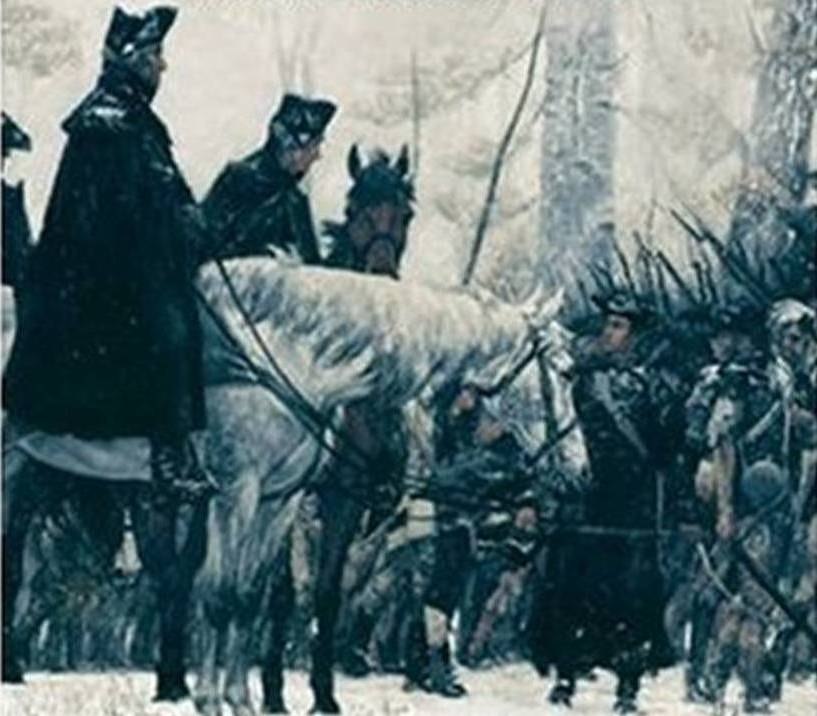Jul.04.2010
2:14 pm
by Ed Beakley
And for the support of this Declaration, with a firm reliance on the protection of Divine Providence, we mutually pledge to each other our Lives, our Fortunes, and our sacred Honour.”
In the 234 years of writing and speeches about America - what it means, what it offers its citizens, what it does, should do and stand for – by Presidents, Generals, Admirals, poets, the press, observers, citizens, and leaders – none are more compelling and important than the final sentence of the Declaration of Independence. Yet, on the 4th of July, 1776, even as the Declaration was adopted and before the words were delivered to General Washington and the Continental Army, the British Army having retreated from Boston, now landed in force in New York, severely outnumbering Washington’s Army. In retreat the Continental Army barely escaped a flanking entrapment at Long Island, and by late October had suffered two more defeats at Harlem Heights and White Planes.
As winter began and the British settled into winter quarters, with these successive defeats, the dominant positioning held by the British, battle losses by the Continental Army, plus the ending of militia commitments, could it be expected that the necessary thousands of troops would reenlist in the spring of 1777? As the Continental Army encamped along the Delaware River on December 8th, finishing the long retreat from New York, Washington was now considered an indecisive commander by many, some signers of the Declaration had gone over to the British, the Continental Congress had abandoned Philadelphia; the General could see the army evaporating before his eyes. The promise of the victory at Boston and the words of July were within a breath of being but a small footnote in history.
Washington sent his most trusted agents into Philadelphia and New Jersey to enjoin the leaders to raise troops. In mid-December he wrote to Lund Washington, “Our only dependence now is upon the speedy enlistment of a new army. If this fails , I think the game is pretty near up.” Few new recruits were found.
But Washington was not beaten, knowing fully the consequences, along with General Nathanael Greene, he makes the plans to cross the Delaware in the middle of the night and attack the Hessian garrison at Trenton. He writes “… but necessity, dire necessity, will, nay must, justify an attempt.” General Washington has made the decision- for the army and a nation.
Americans all, know the story of the incredible game changing December 26th victory against the Hessians at Trenton, but the more telling story is not that of the battle, but rather it is of the “march.” Planned with three attacking elements, two are unaccomplished because of ice in the Delaware River. Breaking camp at two in the afternoon, the conditions of the river and the winter storm cost three hours in the Delaware crossing. Given the need for surprise and a dawn attack, it would have not been considered cowardly to abandon the attack. Washington never hesitated, explaining later to John Hancock, ” I well knew we could not reach Trenton before day was fairly broke, but … I was determined to push on at all events.”
In victory there were only two American casualties – both men freezing to death during the march.
The most well known painting of the Christmas night movement to Trenton depicts General Washington as bold leader standing at his boat’s bow as the army crosses the Delaware. The cover of 1776by David McCullough is adorned with a representation of Washington accepting the surrender of the Hessian commander. But in viewing the above little known painting of General Washington observing the beleaguered, ill outfitted Continental Army as it staggers through the cold, sleet and snow taking the whole of the night before reaching Trenton and attacking in a snow storm three hours later than planned, one requires little imagination to guess Washington’s mind. How heavy was the burden of the multiple defeats, knowing there might not even be an army come the spring, knowing that defeat here most certainly would be the end to the revolution, and indeed, how heavy on his mind was the responsibility created by the words of the July 4th Declaration?
The audacious decision to attack across an icy river in the worst of winter weather resulted in a victory that made a piece of paper - expressing with some most excellent words an incredible concept – a living thing, an ideal we celebrate for the 234th time. For me, the essence of decision making and leadership is not to be seen in the depiction of victory, but rather here in perspective of General George Washington in the snow as his rag-tag Continental Army moves to battle, his decision completely in the balance. Over time, the painting presented above has grown to be my favorite representation of American History, compelling as possibly representing the singularly most significant event in our history to this day. Without Trenton there would have been no “Spirit of 76″ out of the 4th of July.
We celebrate our country’s birthday in the warmth of summer recalling the day we declared our right as free and independent states, the day the signers pledged their lives, fortune and sacred honor, but we would do well to also recall a bitter cold Christmas night, a general and an army that made it so.
Happy Birthday America
Note: Sources for this article are 1776 by David McCullough and 100 Decisive Battles: From Ancient Times to the Present – The World’s Major Battles and How They Shaped History by Paul K. Davis
Filed in War and Remembrance,What Kind of War | Comments Off

